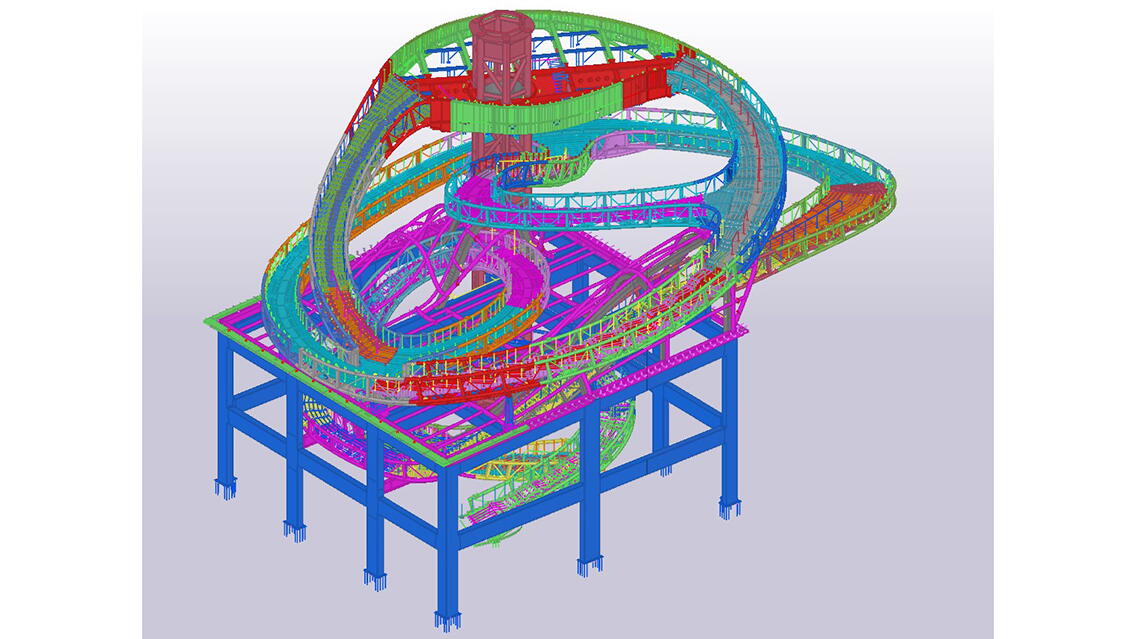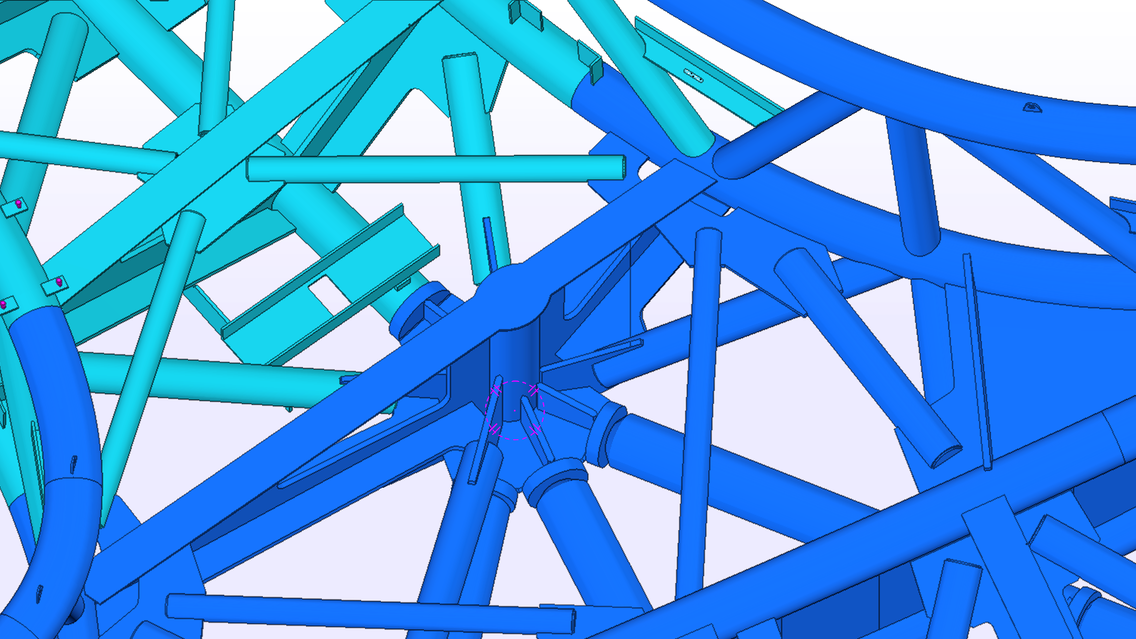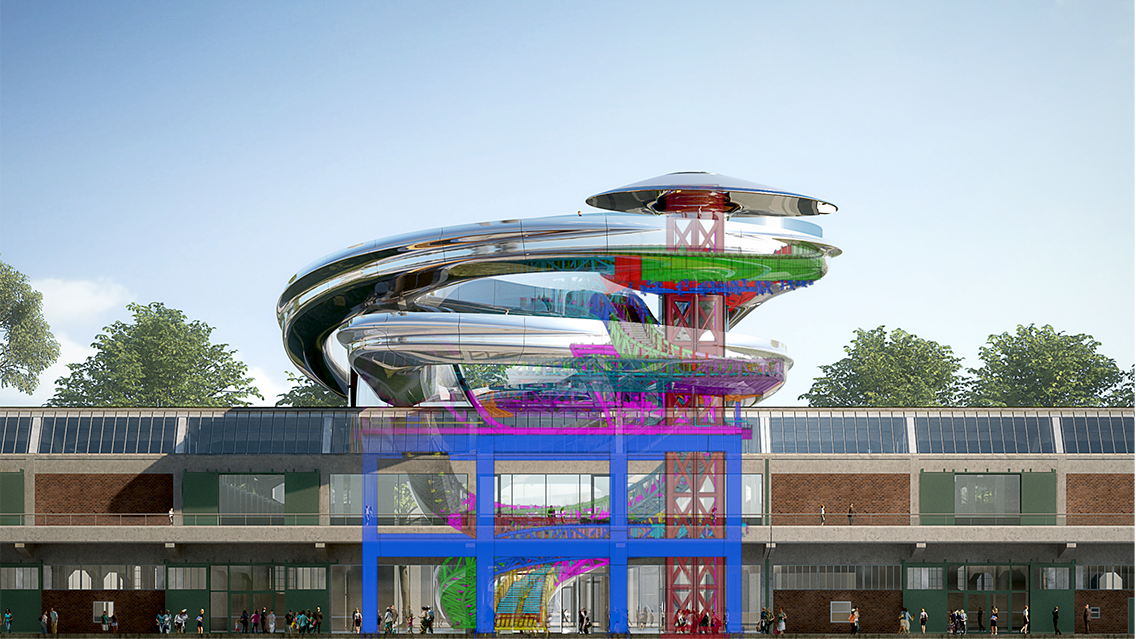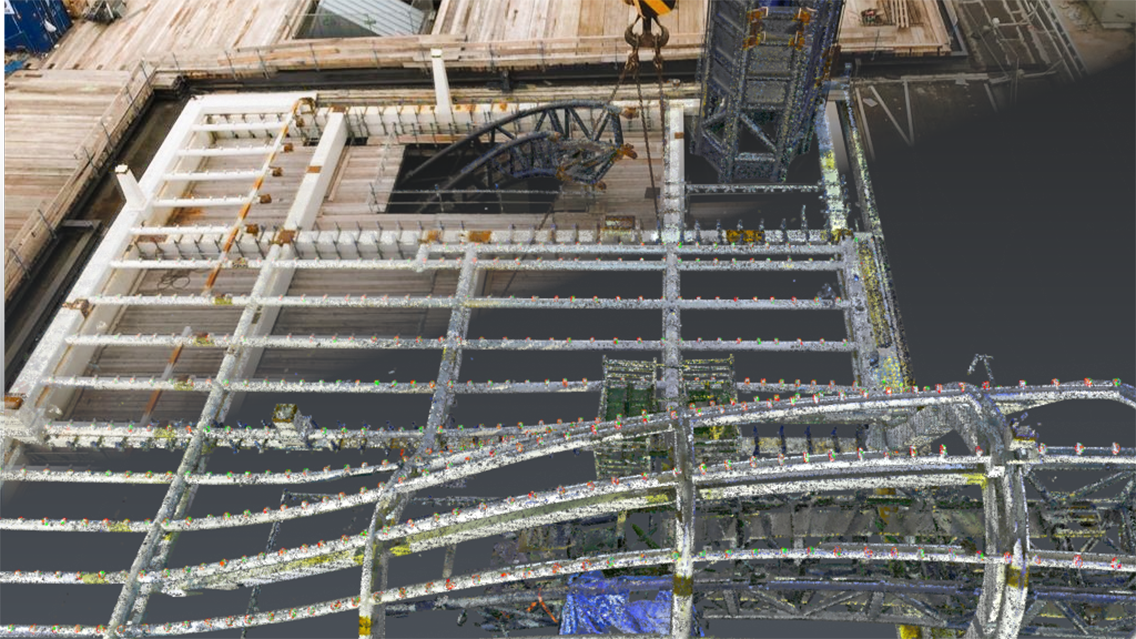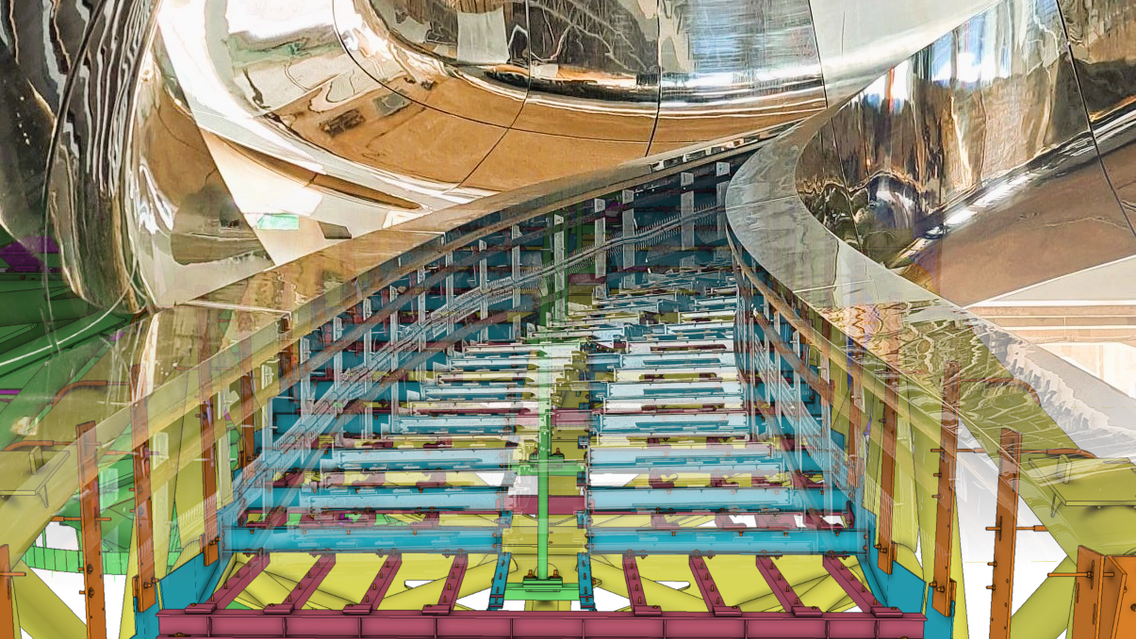When it opened in 1923, the San Francisco warehouse in Rotterdam, with its 360 m length, was the largest storage and transshipment warehouse in the world. After a fire in the middle of the building in 1948 permanently split the warehouse in two, the now iconic FENIX I and FENIX II were resurrected. The latter will house the Droom en Daad Foundation's new FENIX Migration Museum.
At the site of the museum's lobby, the Tornado, a double staircase with a viewing platform that swirls through the building and rises above the roof, will become a new landmark on the wharf. Chinese architecture company MAD Architects designed the Tornado based on a sketch by Ma Yansong. MAD's architecture is organic in form, adding to the rather angular profile of Rotterdam's skyline. On the other hand, it is the first time a Chinese architect has realized a museum building in Europe and refers to the fact that the neighborhood of Katendrecht, where the museum is located, was one of the first Chinatowns in Europe.
The structure consists of two revolving staircases that rise from the ground and culminate in a viewing platform at the top. The stairs bring different rhythms to the space, breaking the imposing scale of the building and creating more human-scale and intimate spaces. Made of stainless steel and wood, the materials strongly contrast with the original concrete and steel of the warehouse while at the same time encouraging visitors to imagine embarking on a ship.
More than a renovation
Throughout the project, there is a sharp contrast between the stately, concrete building on the one hand and the organic steel Tornado on the other. The Tornado resolutely argues the opposite where the building is being renovated to bring back the grandeur of the past.
For both areas, however, a high level of finish is key. A seamless transition between the Tornado and the building is, therefore, crucial. To this end, several scans of the existing structure were taken during the initial phase to properly map the transitions at the various levels. These scans were also included as a reference in the BIM Model. At those transitions, the necessary dilations must be respected at all times without being too visible.
Constructive interaction
Due to the combination of an old concrete warehouse and a new steel structure, exceptional attention needed to be paid to decoupling. Thus, a new steel table structure was created (lobbybox), which carries the Tornado. On this steel structure, a glass roof is provided, with double-curved glass panels where the positioning of those panels was fine-tuned based on a point cloud recorded on site. Throughout the glass roof, three openings are provided. One for the elevator core and the other two for the Tornado that passes through the roof through the two cockpits passes the elevator shaft, and finally heads towards the viewing platform. The many different elements in the construction are thus dilated, namely the existing warehouse, the glass roof, the space frame, the elevator shaft, the stainless steel skin, and the doors.
So, there were a lot of different partners who had to integrate their detailing into one to bring everything to a successful outcome. This is where the whole BIM process played an important role. It created an intense collaboration between CSM, the steel constructor, EGM architects, CIG the stainless steel skin supplier, Woodwave, the wood cladding contractor, Bosman for the installations, and IFS, the glass constructor. In addition to these partners, there were several other parties involved, each of whom had access to a detailed BIM model.
Steel complexity
Due to the many curves in the entire structure, the high demands in terms of aesthetics and construction and the convergence of different disciplines in one steel structure, the project is highly complex. The combination of Grasshopper and Tekla was crucial to building the model and making it producible. Consequently, using Grasshopper, an algorithm was also developed to induce a 3D precamber so that the final deformations on site could be minimized. Any deviations after assembly were also controlled using Grasshopper.
The steel structure of the spiral staircase consists of a combination of sheet metal, circular tubes, and rectangular tubes. The entire space frame contains as much as 2,100 running meters of curved tubes. In turn, the glass roof consists of curved tubes, with wall thicknesses of 16 and 20mm. For the elevator core, the main columns have a diameter of 508mm, and for the platform, 100mm thick sheet metal has been used.
To minimize the impact on those living in the building's neighborhood, the largest possible components were always transported to the construction site. This results in fewer freights, which is also the most obvious choice ecologically speaking. Furthermore, wherever possible, an attempt was also made to transport by water. For example, the elevator core and parts of the platform were transported to the construction site across waterways.
Modeling the structure was a daunting task, and mounting brought difficulties. With so many bends and curves present, it was impossible to represent this on a 2D plan. Therefore, the choice was made to work with a tablet and different models using Trimble Connect to be able to do the mounting. By doing so, many paper plans were saved.
In short, the complex integration of the old and new in the FENIX project requires careful coordination between various partners. Thanks to intensive collaboration and advanced technologies, including BIM, we were able to meet the challenges of this project and deliver an iconic result. The Tornado, with its bold design and innovative materials, will serve not only as a new eye-catcher on the wharf, but also as a symbol of the successful collaboration between creativity, craftsmanship and technology.

